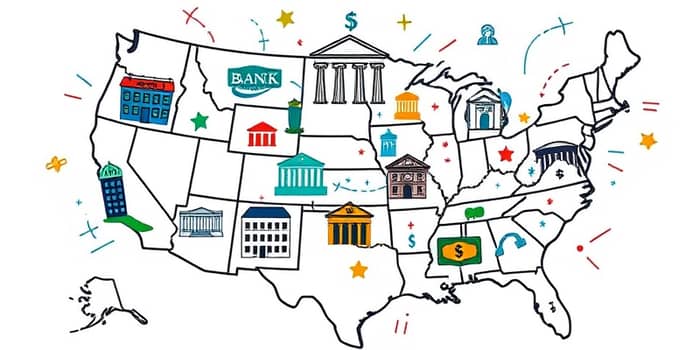
In 2025, U.S. bank M&A activity has kicked off with unprecedented momentum. Through March 31, 34 bank M&A transactions have been announced, marking a stronger start than the previous year. This wave reflects a deepening consolidation trend across all regions, reshaping local competitive landscapes and redefining future growth opportunities.
What explains this renewed vigor? A combination of regulatory shifts, economic pressures, and technological imperatives has set the stage. As banks grapple with mounting fixed costs and compliance demands, they find mergers an effective route to scale up. Meanwhile, regulators are signaling more flexible review processes, easing historical barriers and unlocking new strategic possibilities.
The first two months of 2025 saw 19 merger announcements totaling $985.5 million, compared to 21 deals worth $653.8 million during the same period in 2024. Industry leaders cite this jump in deal value as evidence of accelerating consolidation across regions and an urgency to build critical mass.
Among the most significant transactions are Seacoast Banking Corp.’s planned $109.7 million acquisition of Heartland Bancshares and Old Second Bancorp’s $196.5 million purchase of Bancorp Financial. These deals demonstrate how midsize institutions are leveraging strategic alignments to enhance deposit bases, broaden service lines, and bolster branch networks.
Several interrelated factors are fueling bank M&A activity at this scale:
As branch networks shrink and digital banking grows, scale has become synonymous with competitiveness. National and super-regional banks now outspend smaller peers by orders of magnitude on marketing and IT, creating a widening efficiency gap.
The pace and pricing of deals vary notably by geography. Below is a snapshot of Q1 2025 activity:
Pricing multiples in the Southeast climbed to 159% of tangible book value in early 2025, up from 143% a year earlier. That uptick indicates heightened competition among acquirers in the region and a premium placed on rapid expansion.
Beyond midsize transactions, large-scale acquisitions highlight the transformative power of M&A. BMO Financial Group’s 2021 purchase of Bank of the West for about $105 billion in assets created a nationwide franchise with a particular emphasis on western U.S. markets.
Similarly, Lone Star National Bank’s acquisition of Rio Bank, along the Texas–Mexico border, underscores a tailored regional strategy. By blending customer bases and leveraging local expertise, these banks aim to capture new segments and cross-sell products at scale.
Such headline deals underscore how institutions deploy capital to achieve immediate footprint expansion, rather than building organically over years. This tactic can unlock synergies in staffing, technology, and regulatory compliance.
Despite clear benefits, mergers carry inherent risks. Combining disparate technology systems, aligning corporate cultures, and securing regulatory approvals often extend timetables and stretch resources. Success hinges on meticulous planning, clear communication, and diligent oversight.
Key integration hurdles include:
post-merger integration challenges and culture alignment, retention of critical talent pools, and seamless customer migration onto unified platforms. Any misstep can erode the anticipated cost savings and revenue enhancements that justified the deal.
Looking forward, industry analysts project up to 40 deals annually among banks with over $100 billion in assets. If that trend holds, the U.S. could see the emergence of seven new megabanks—each exceeding $1 trillion in assets—over the next decade.
While more consolidated markets abroad demonstrate nearly threefold efficiency gains for large banks versus smaller counterparts, U.S. institutions remain in the early innings of that trajectory. The coming years will test whether these combined entities can deliver on promised digital transformation, operational efficiencies, and enhanced customer experiences.
Ultimately, the wave of mergers reshaping regional markets reflects a broader evolution in banking. As technology demands intensify and regulatory frameworks evolve, consolidation serves as the vehicle for banks to stay competitive, serve customers more effectively, and navigate an increasingly complex financial landscape.
References













